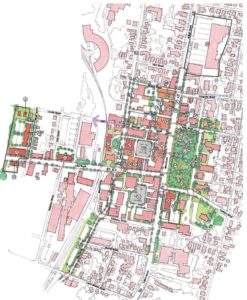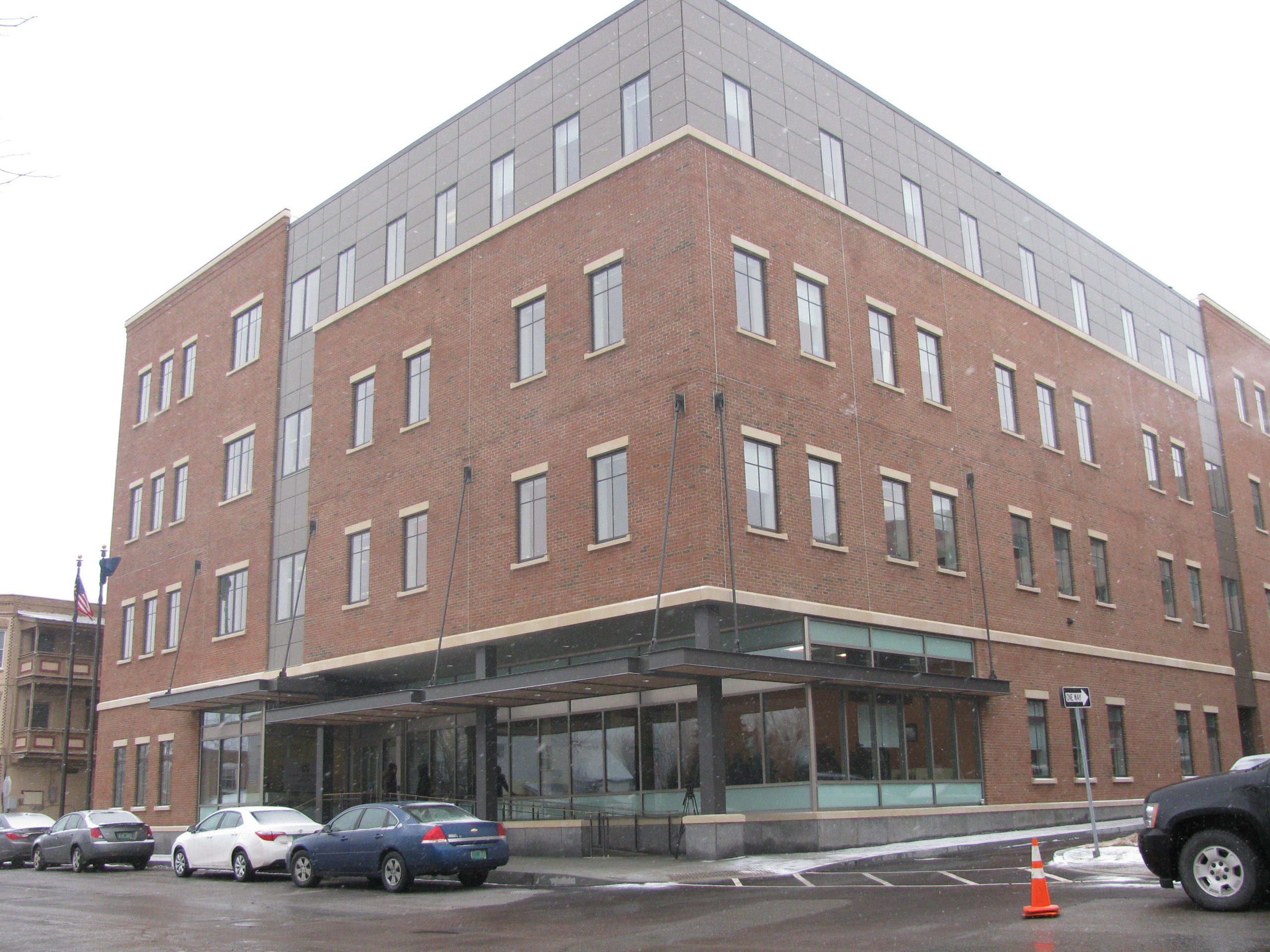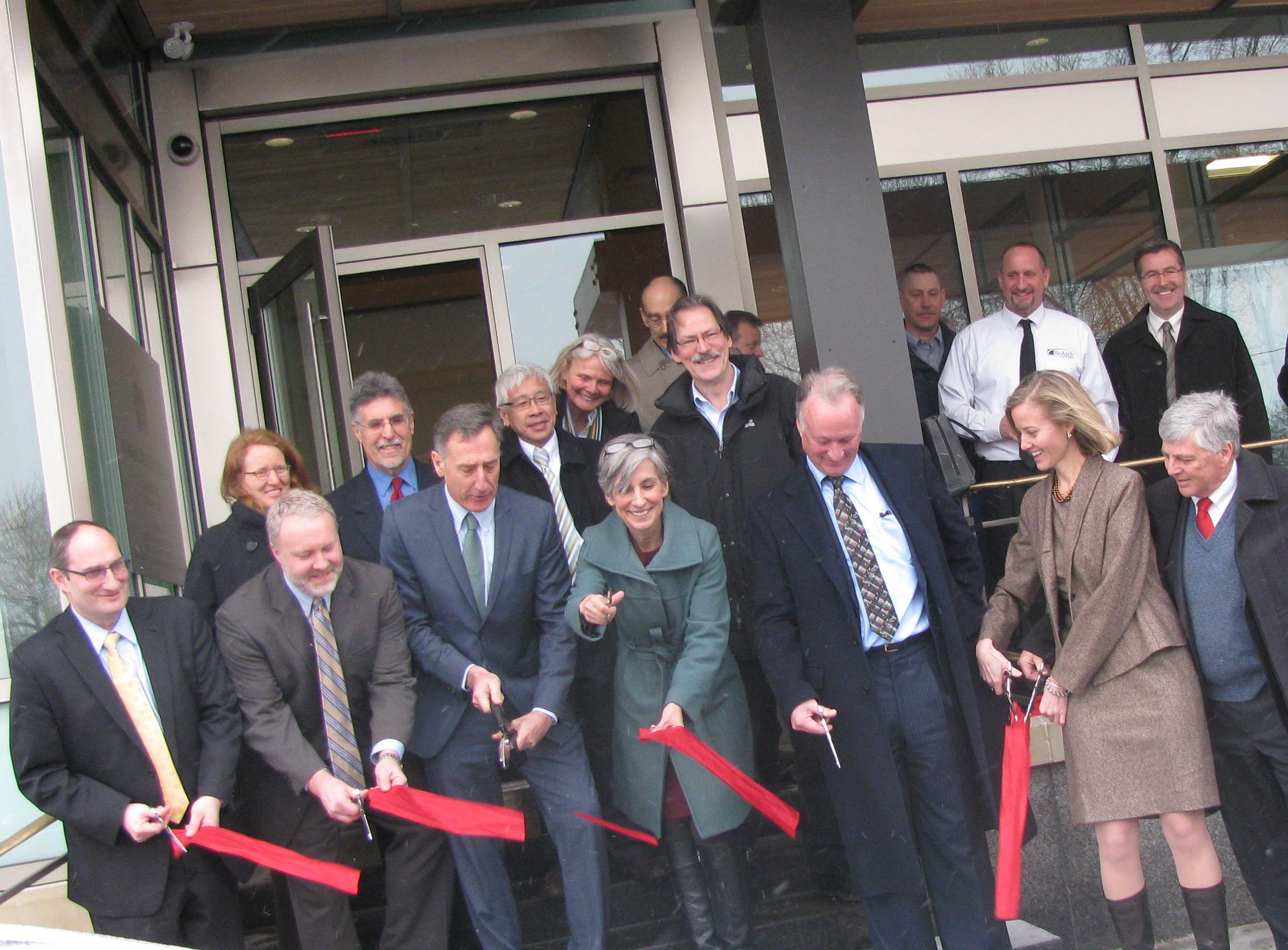The City of St. Albans has been in the news quite a bit lately for its successfully completed downtown revitalization projects. And rightly so – they have a newly completed parking garage, a redesigned Main Street streetscape, have assisted in the expansion of the multi-national business Mylan Technologies, and built a new privately owned State Office Building in the heart of downtown. And if that’s not enough, a public-private partnership has just been announced for a new hotel to be located downtown. Most municipalities would be happy to accomplish just one or two of these projects. How did the City of St. Albans pull all this off? It wasn’t by chance; it took lots of hard work and commitment.
These major steps in revitalizing downtown St. Albans came about through a multi-step process accomplished over a period of several years. Like many Vermont communities, the City began with creating a vision of what they wanted for their downtown. But it didn’t simply sit on a shelf. The final master plan became an actively-used blueprint for moving forward with specific projects. To show their commitment to the revitalization of its downtown, the City began with several key projects. The establishment of the Tax Increment Finance (TIF) district was essential for the City to finance various identified projects. And they also began investing in streetscape improvements, which in turn spurred building owners to upgrade facades and storefronts.
With these projects underway, the City focused on bringing more people downtown to work, shop and play. An opportunity arose for relocating the State Offices into the core of downtown to allow Mylan Technologies to expand onto the State’s existing site at the edge of downtown. For this, the City worked with the public and private sectors to help one business expand, the State to relocate into a core city block, and provide more parking downtown for businesses and visitors. Add to this the planned construction of the new hotel, the City will have gained about $40 million in public and private investment in only a handful of years. So how did the City successfully take these projects from vision to reality? Here are some of the “takeaway” lessons I gained from White + Burke’s involvement in the City’s revitalization efforts.
1. Teamwork
A dedicated team of professionals with the necessary technical expertise and skills for addressing the complexities involved in real estate redevelopment in a downtown environment is crucial. The team should include both public and private sector people with stakes in the success of the projects. Regular weekly team meetings keep everyone abreast of both the big picture and the details, help keep everyone on-task and on schedule, allow early identification of issues, and provide a forum for promptly identifying solutions. Also important is knowing the team’s strengths and allocating the best person / people to tackle an issue when it arises.
2. Landowner Commitment
Work with landowners early before unveiling designs. This helps them become part of the project, “buy into” and ultimately become champion supporters. A few questions that you should answer before meeting with each landowner include:
- Why is this project good for the community?
- How does the project affect them?
- Why should they support it?
Always identify the best person / people to approach each landowner before making contact. For example, perhaps a landowner has an ongoing gripe with the local government that may have nothing to do with the project. Having a team member who isn’t a municipal employee contact this landowner can lead to positive discussions and better outcomes.
 3. Public Sector Financing
3. Public Sector Financing
The City of St. Albans worked with the belief that strategically used public funds would result in private investment following. That proved to be correct. But they didn’t just spend public money and cross their fingers about the private investments. Agreements with private entities were negotiated in advance. Additionally, knowing what public funding options are available for a community is beneficial for stretching municipal dollars for financing various portions of projects. For the St. Albans project, tax incremental finance (TIF) funds were used for financing the parking garage and the first round of planned transportation enhancements, the streetscape improvements on Main Street. In addition, State funding was quickly identified and accessed for cleanup efforts of hazardous materials identified during the environmental review of several parcels to be redeveloped.
4. Leadership
Solid support of a municipalities’ leaders – both public and private – is crucial. In St. Albans, the City Manager and Mayor actively led the efforts. The City Council, after asking the important tough questions and assuring themselves of the soundness of the various projects, repeatedly voted unanimously in favor of the City’s investments. The local newspaper publisher supported the projects as did other key local business people. Speaking with one voice, these leaders’ efforts resulted in overwhelming voter approval of a series of bond issues critical to the entire revitalization effort.
These principles proved key for the City of St. Albans. As myriad hurdles and challenges crop up, as they inevitably will, a team with this distinctive type of structure and approach can think and act creatively to solve them and keep moving forward to success.
By: Gail Henderson-King
